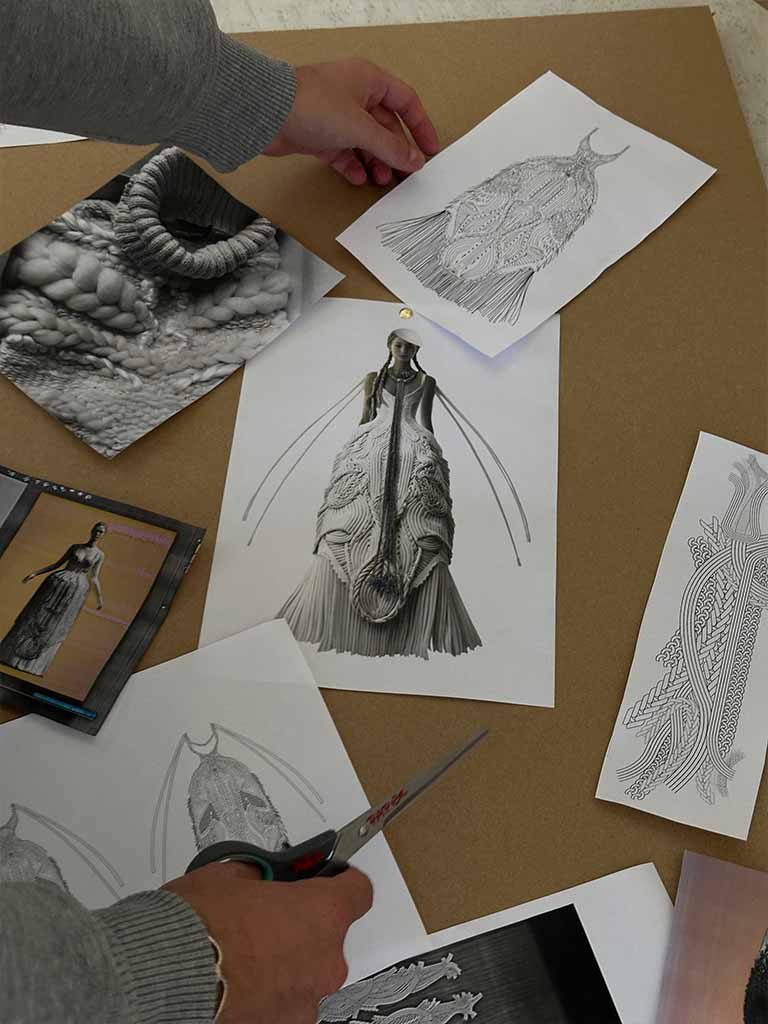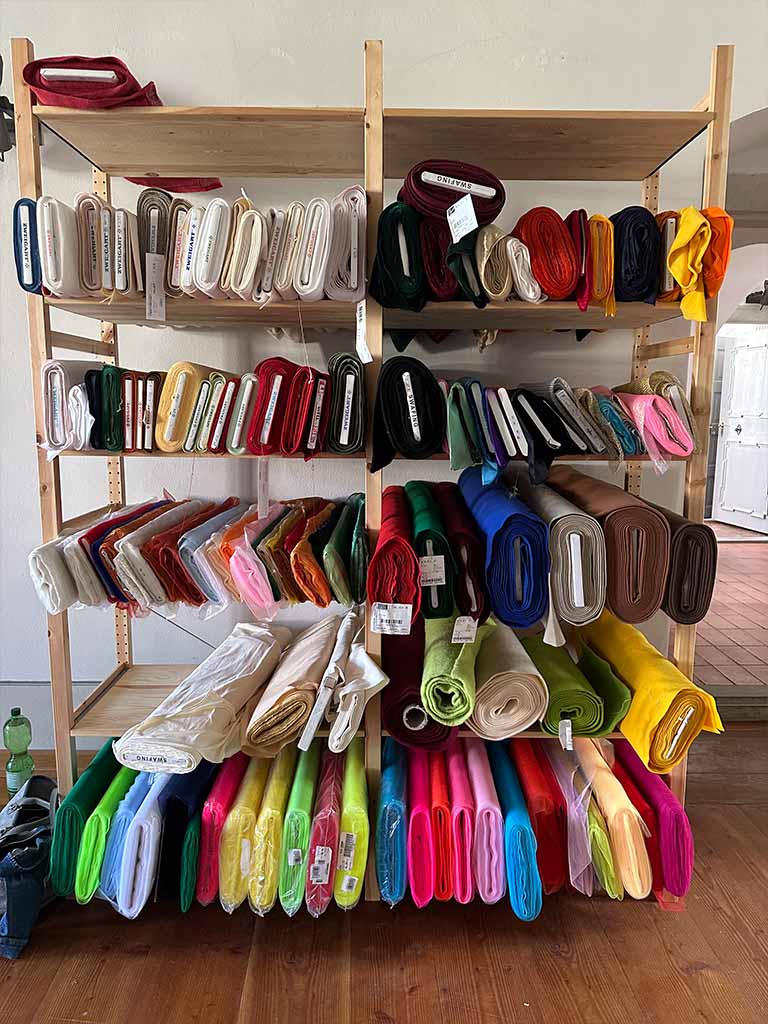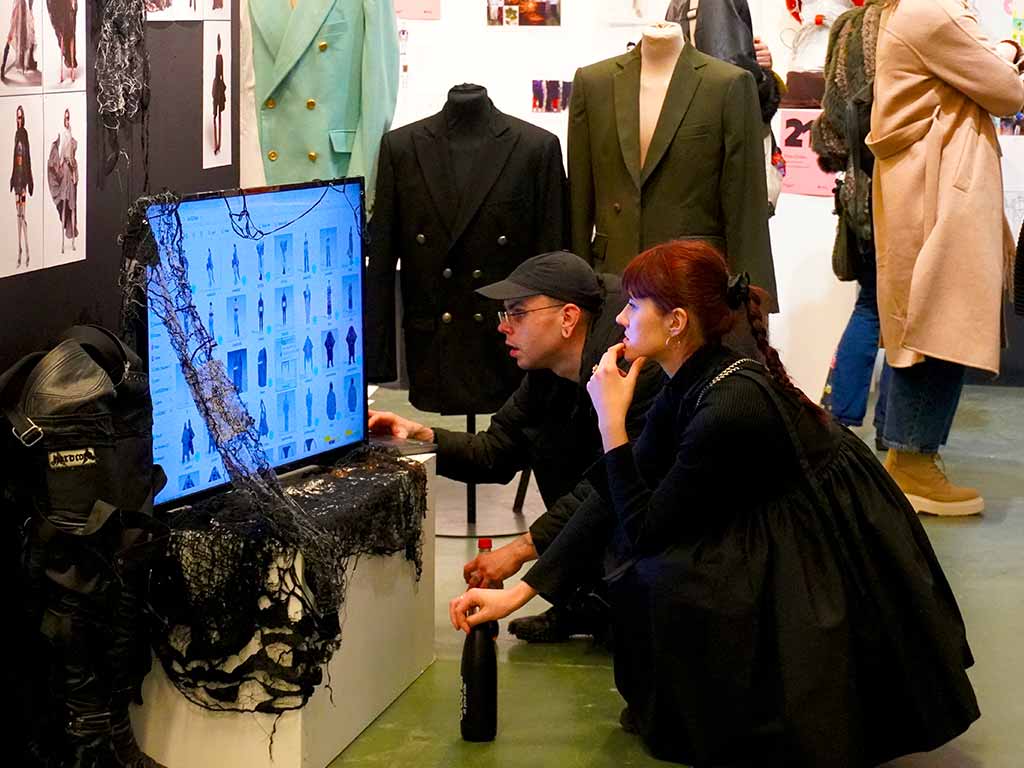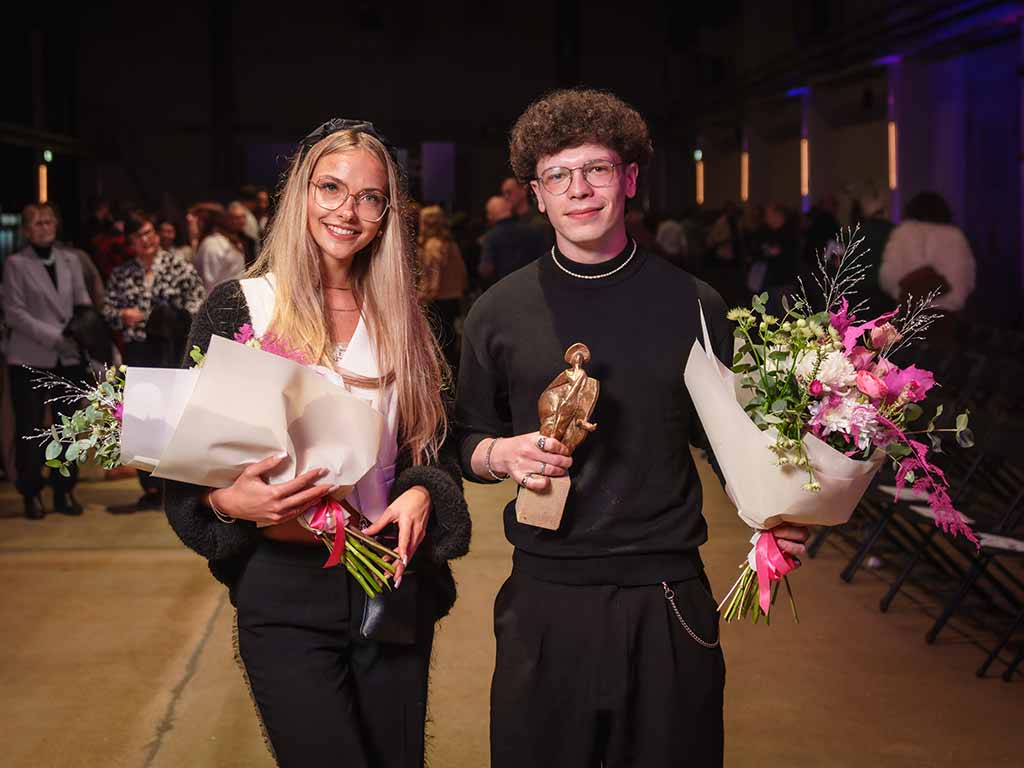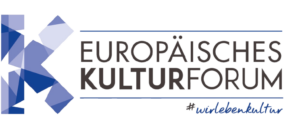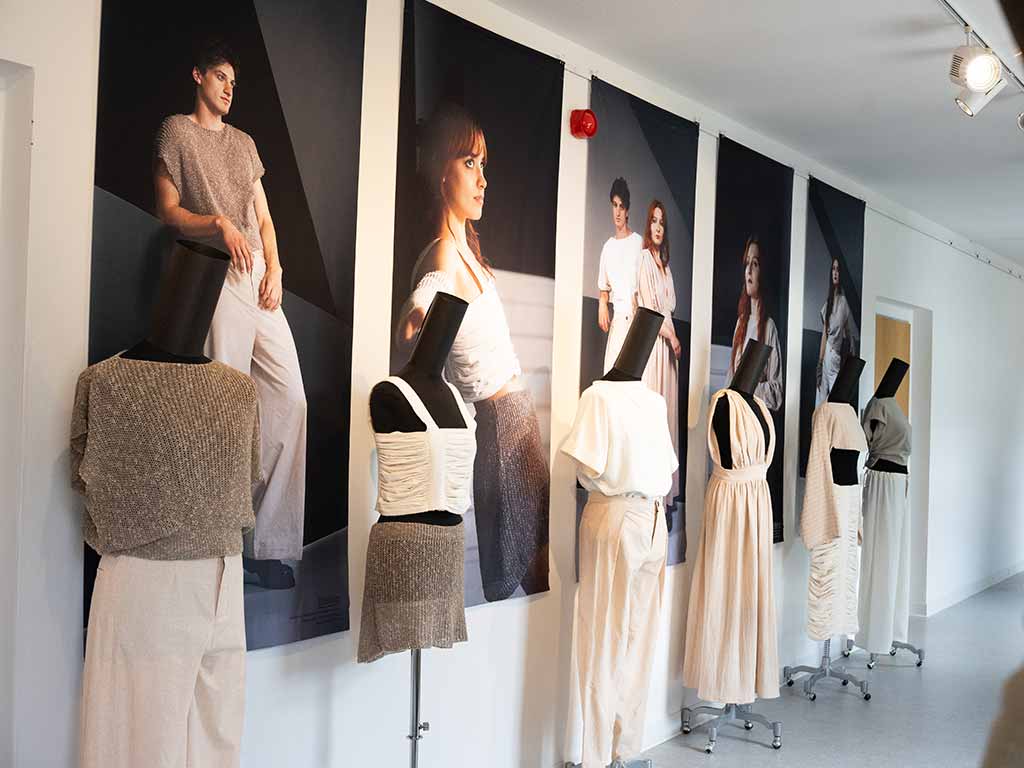
Something new is emerging between virtuality and craftsmanship – A conversation with Prof. Anke Ott about the Makerspace 2026
Fashion is far more than mere clothing – it is an expression of culture, personality, and social change. At the renowned Faculty of Applied Arts in Schneeberg, Prof. Anke Ott teaches her students precisely this understanding of fashion as a holistic, creative, and reflective field of design: digital, artisanal, and interdisciplinary. We spoke with Prof. Anke Ott, who facilitated the FashionTEX Makerspace process. In this interview, she explains how uncertainty turned into a joy of experimentation and why the future of fashion lies in the combination of technology and craftsmanship.
Ms. Ott, you have been closely involved in the Makerspace. What developments did you observe among the students?
Prof. Anke Ott: What was particularly impressive was how quickly some students were able to transform their digital designs into real forms. At the beginning, many still felt a certain uncertainty; new technologies like CLO3D or 3D printing were completely new to some. But over the course of the two weeks, this changed significantly. The participants began to think interdisciplinary, critically question their digital models, and use physical materials in a targeted manner. Towards the end, it was clear: they had not only gained technical skills, but also a new understanding of how closely virtuality and craftsmanship are connected. You could really see how the students gained self-confidence and how curiosity turned into a joy of experimentation.
Were there any moments that particularly stick out in your memory – perhaps real “aha” moments?
Prof. Anke Ott: Yes, many! It was always exciting when the thread suddenly broke, when someone understood how to create a digital pattern in CLO3D or transfer an idea from the screen to 3D printing. These moments demonstrated how creatively the students work once they truly grasp the technical possibilities. Some combined digital precision with artisanal sensitivity in an impressive way. For me, such hybrid projects are the best example of how sustainable and creative fashion can emerge when technology and craftsmanship work together on equal terms.
The makerspace brought together students from eleven countries. How did the international and interdisciplinary collaboration work?
Prof. Anke Ott: The makerspace was a European laboratory in the best sense of the word. Students from eleven countries and very different disciplines came together, each with a variety of backgrounds, perspectives, and educational systems. This diversity was incredibly enriching. It led to an open, collaborative working environment where ideas circulated freely. Design and technology became a common language. And that, for me, was the most rewarding effect: The students learned from each other, inspired each other, and gained new perspectives on their own work. Design became a bridge across languages, cultures, and disciplines.
Which technical tools were used most intensively?
Prof. Anke Ott: CLO3D was definitely the most used tool – both for digital pattern development and simulations. 3D printing and laser cutting were also used frequently. Some teams also worked with digital embroidery or knitting. What was exciting was that this combination enabled a seamless workflow from the digital idea to the physical prototype. The results were impressive because they were not only technically precise but also sensitive to craftsmanship.
Were there any challenges that particularly occupied you?
Prof. Anke Ott: Of course, that’s normal for such an intensive format. A major challenge was time. The physical implementation of the prototypes simply requires more space, especially when participants come with different levels of prior knowledge. Combining different technical systems was also challenging. But thanks to the excellent organization, clearly structured workshops, and the team spirit of the groups, these hurdles were quickly overcome. What made the makerspace so special was the openness to try new things. Everyone was willing to embrace different ways of working, and that’s exactly what led to the best results.
What would you recommend for future makerspaces?
Prof. Anke Ott: Absolutely: Interdisciplinary and international collaboration must remain; that’s the heart of the format. From a didactic perspective, the principle of learning by doing in small, agile teams has proven successful. I would like to see traditional techniques like knitting or embroidery integrated even more. They offer enormous potential when combined with digital processes. Furthermore, more time could be allowed for the physical implementation or clear preparation guidelines could be provided, for example, requiring digital patterns to be created in advance.
And when you think about the future of the project – where do you see the greatest potential?
Prof. Anke Ott: In the long-term establishment of digital fashion competencies at European universities. FashionTEX can become a true platform that connects education, research, and practice across Europe. If we succeed in empowering young designers to think about fashion in both a sustainable and digital way, it will change the future of design – not just in Europe, but globally. The makerspace demonstrates that the future of fashion is created where craftsmanship, technology, and sustainability meet.



